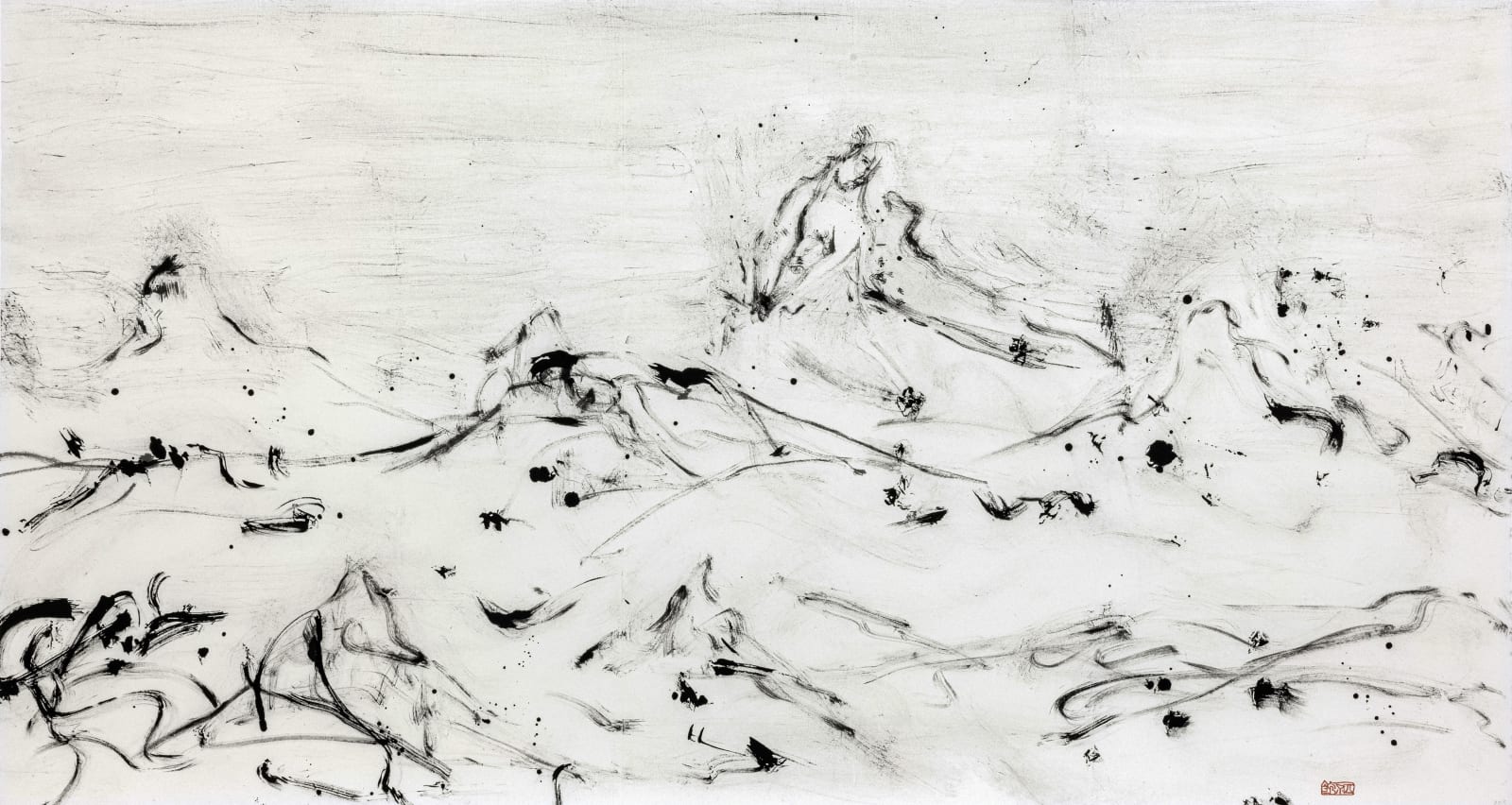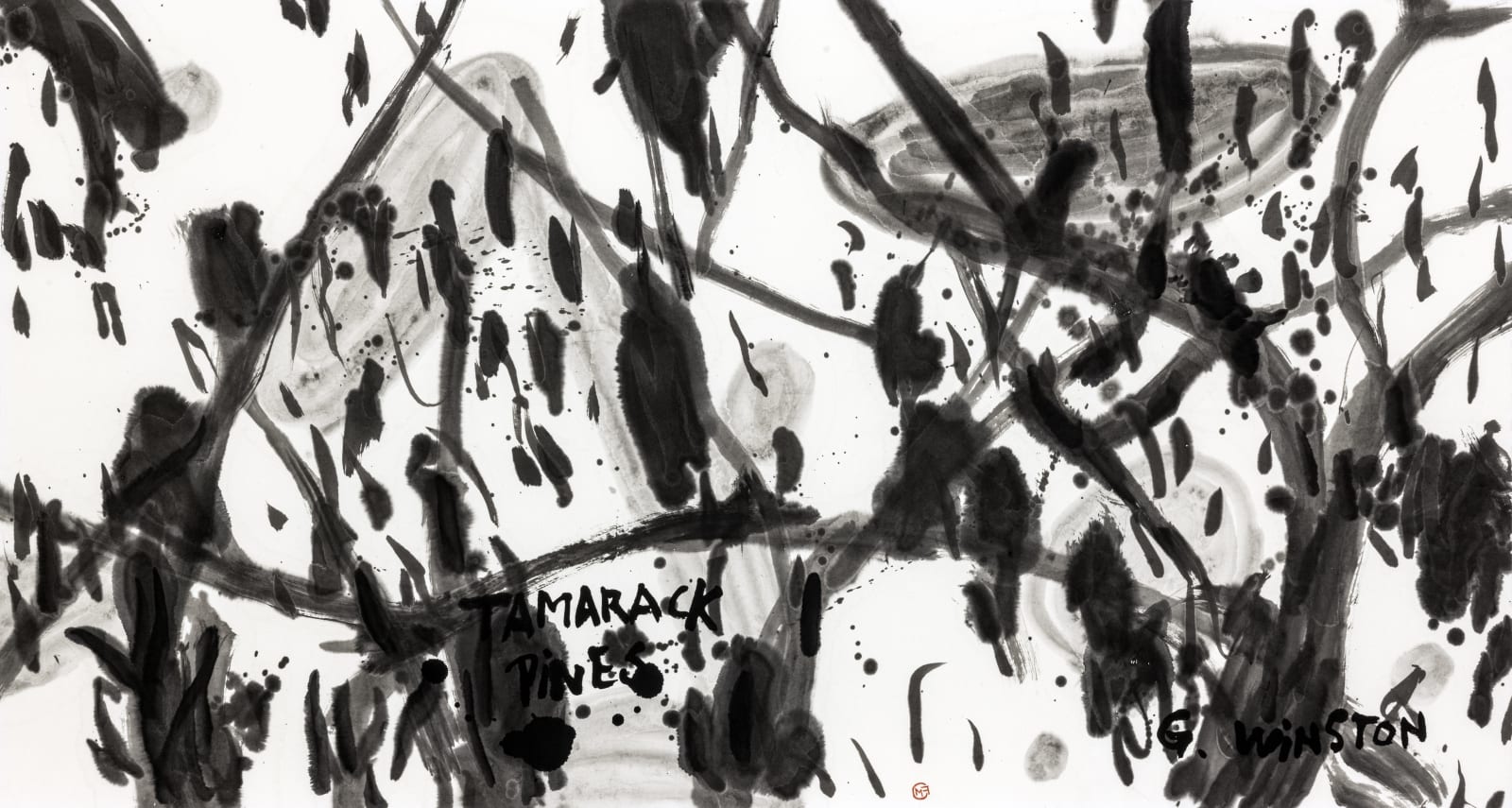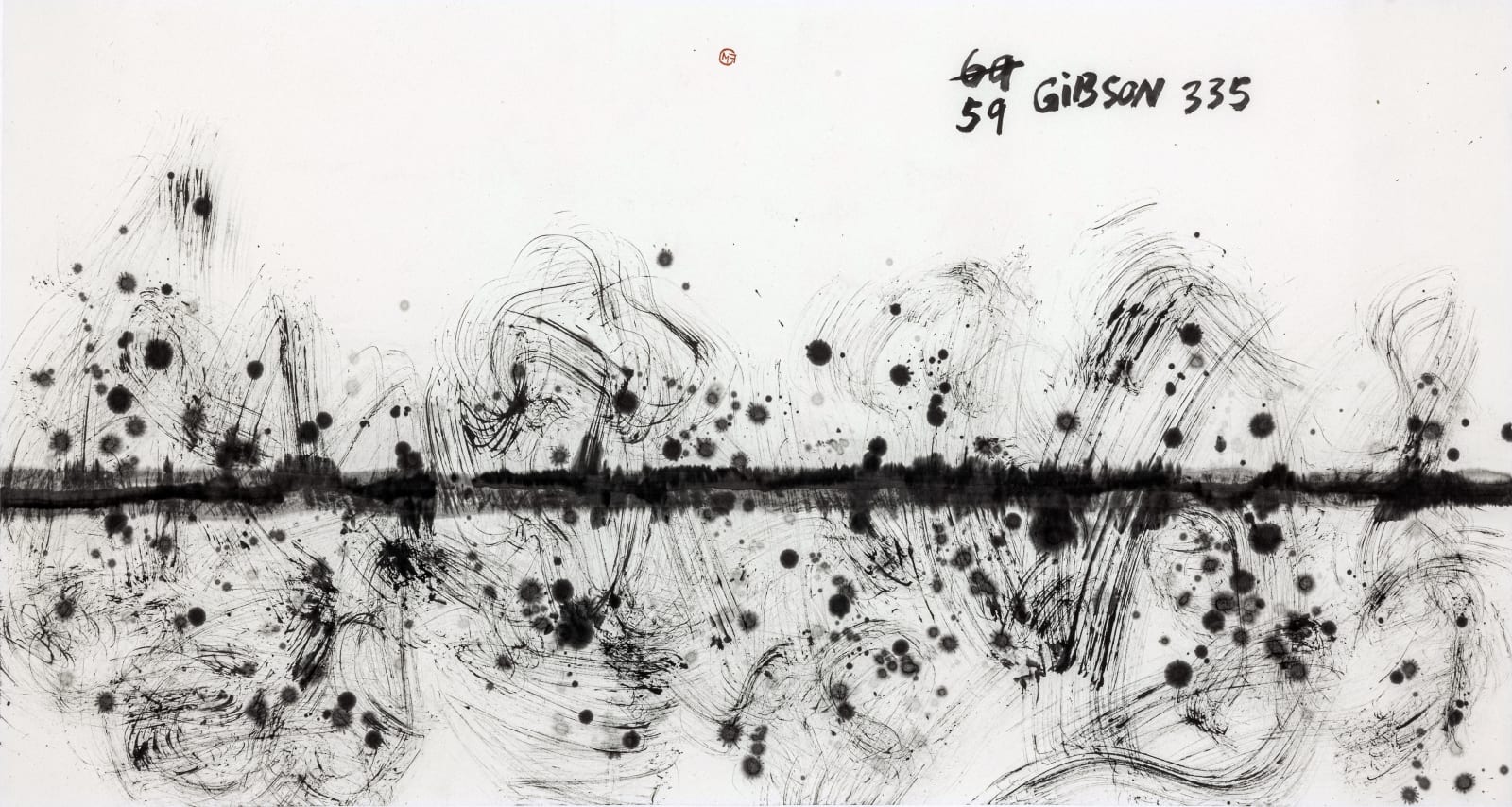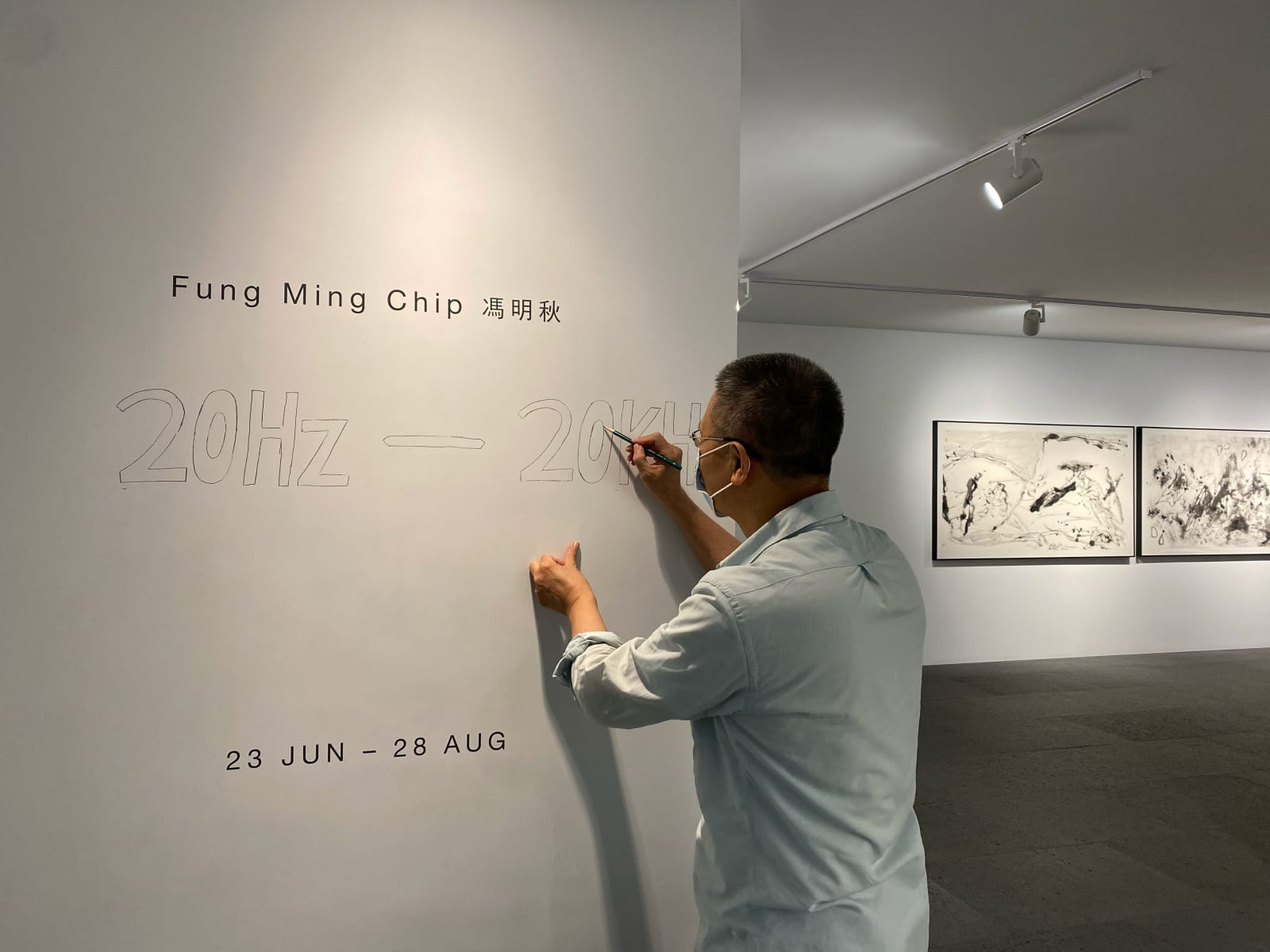“20HZ – 20KHZ”: FUNG MING CHIP’S MUSICALLY INSPIRED PAINTINGS
Can music be transformed persuasively into painting? This was what calligrapher-artist Fung Ming Chip explored in his latest show, “20Hz – 20KHz,” at Hong Kong’s Galerie du Monde. The large-format ink paintings on display recall traditional Chinese landscapes but actually derive from the artist’s immersion in contemporary music; the tracks are linked via QR codes in the exhibition handout, encouraging gallerygoers to experience Fung’s inspiration and his ink art together.
Fung’s practice draws on the calligraphic tradition of transmitting a sense of time and rhythm through the artist’s gesture, combined with a visual language that favors rearranged characters and notational pictograms, sometimes created in correspondence with elements of musical composition, as in his Time Script and Music Script series. The contemporary synthesis of ink art and an embodied rhythm is now hardly novel—take the large-scale, balletic live calligraphy of Wang Dongling, or French artist Fabienne Verdier’s ink-inspired painting performances that respond to live chamber music. Yet Fung’s new works at “20Hz – 20KHz” offer a different approach in their expression of music in landscape form. To create such paintings, the artist sits and envelops himself in various sounds—New Age music, Tuvan throat singing (Khöömei), jazz, and more—absorbing the layers and rhythms, experiencing the space that opens up between the notes. When he feels the spirit, he stands and paints, integrating mood and rhythm with the traditional landscapes of his visual memory to achieve his dynamic compositions.
Though time and emotion are indexed in the ink layers of these works, it is the sound field (harmonic relationships over relatively long timespans) that dominates, rather than the logic-progression of notes through time, as reflected in Verdier’s work, or the calligraphic gesture foregrounded in Wang’s. In Vangelis / Himalaya 1 (2019), for instance, Fung transmutes renowned film composer Vangelis’s broad, evolving soundscapes into grand open spaces in which massive mountains come to life striding across the landscape, and rocks and shocks and perhaps small earthquakes appear as short, sharp intense gestures of the brush on paper. In Vangelis / Himalaya 3 (2019) ink spatters and wild gestural strokes invoke hundun (混沌), the generative chaos that partners the void—an aspect of Chinese thought embedded in his practice.
In contrast, Fung’s rendition of pianist George Winston’s “Tamarack Pines,” from the album Forest (1994), evokes the mysterious density and multiplicity of forest-space: leaves, flickering light, raindrops, birds flitting and fluting. Elsewhere, Frame by Frame / Ndalada (2019) exhibits Fung’s long-developed variety of ink and brush techniques. Soft, wet, rhythmic strokes; wide, dry brushwork; and short, sharp jabs enact an exquisite balance between painted and unpainted space, with a firm but unassertive rhythmic flow that reflects the sutra-raga-like underpinnings of the music, and eschews the fixed horizon orientation of typical landscape works.
In contrast, Fung’s rendition of pianist George Winston’s “Tamarack Pines,” from the album Forest (1994), evokes the mysterious density and multiplicity of forest-space: leaves, flickering light, raindrops, birds flitting and fluting. Elsewhere, Frame by Frame / Ndalada (2019) exhibits Fung’s long-developed variety of ink and brush techniques. Soft, wet, rhythmic strokes; wide, dry brushwork; and short, sharp jabs enact an exquisite balance between painted and unpainted space, with a firm but unassertive rhythmic flow that reflects the sutra-raga-like underpinnings of the music, and eschews the fixed horizon orientation of typical landscape works.
In ’59 Gibson 335 (2019), Fung moves toward the abstract, though a firm horizon and evocations of mountain ranges imply representation. Yet the overall impression is musical—the horizontal line more closely resembles the X axis on an oscilloscope, its dense fuzziness suggesting a cantus firmus or drone, around which wide variations on different themes with dotted interjections from cosmic players are thrown.
Fung’s rendition of Sainkho Namtchylak’s Lost Rivers (1991) was a notable absence, as it would have brought an emotional poignancy to balance the idealized quality of the overall presentation. That work expresses grief at the disappearance of mythical rivers and social connections in central Siberia, remarkably translated by Fung into troubled, shimmying ink that betrays an endless sorrow, showing that his music-ink performances need not be feel-good.
Philosopher Roger Scruton, in The Aesthetics of Music (1997), distinguished music from the visual arts by observing that musical sounds could coexist in aural space without obscuring one another, while light from a painted object would obstruct light from behind it. Fung’s gestural ink paintings refute this statement, exulting in the co-existence of visual elements that link time, space, music, and emotion.
Read the full article --





